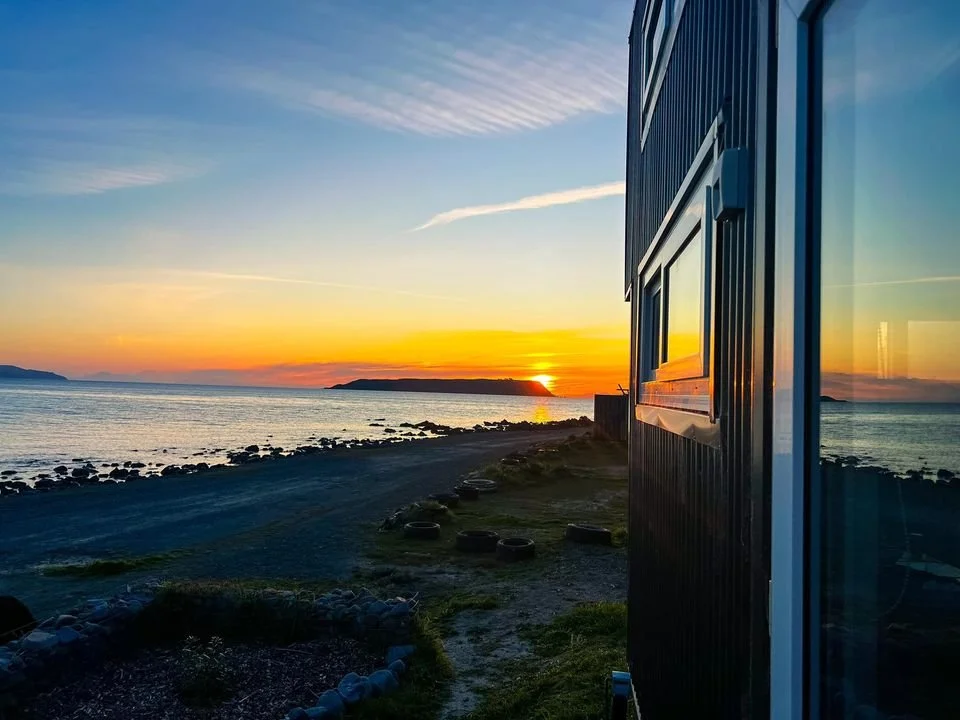Tiny Homes: A Big Solution to the Housing Crisis
Tony’s Tiny Home - Hongoeka Bay, Plimmerton, New Zealand.
Imagine a world where the dream of homeownership is not just a fantasy for the privileged few but a reality accessible to many. In the face of soaring real estate prices, crippling rents around Aotearoa and the struggle for affordable housing, the tiny home movement emerges not merely as a trend but as a potent remedy to the crisis enveloping our cities. In this post, we will explore the transformative power of tiny homes and why developing tiny house villages could signal a new era of sustainability, affordability, and community.
The Benefits of Tiny Homes
The advantages of downsizing into a tiny home are numerous. First and foremost, they offer an economically viable option for individuals or families priced out of traditional housing. Tiny homes often cost a fraction of the price of standard houses. Statistically speaking, the median cost for a high-quality tiny home is around $200,000 compared to the median price of $650,000 for a conventional home here in New Zealand. This substantial price reduction can free homeowners from decades-long mortgages.
If you want to eradicate poverty and promote a better lifestyle, give people the option not to pay rent or a mortgage. Tiny Homes can help people achieve this.
In addition to financial benefits, tiny homes tread lightly on the environment. Their small size requires fewer materials to build and less energy to heat and cool.
Sadly, our government here in New Zealand (Neither the last one nor the current one) does not seem interested in this solution. However, many places around the world are embracing Tiny Homes and creating solutions we should be looking at.
A study in the USA by Oregon’s Department of Environmental Quality found that downsizing to a small home can reduce a house's ecological footprint by as much as 45%. Furthermore, the mobility of some tiny homes opens opportunities for a flexible lifestyle unrestrained by geographic bounds, allowing individuals to live closer to work or nature as desired.
Building Tiny House Villages
Beyond individual homes, tiny house villages bring traditional neighbourhood principles into practice. These communities foster a strong sense of belonging and collective responsibility amongst residents. One shining example is the Community First! Village in Austin, Texas. Built to provide sustainable housing for the homeless, this village features shared amenities such as kitchens, gardening spaces, and art studios, enabling residents to build lives of purpose and connection.
The Full Length Documentary Movie - Community First! Village - https://www.communityfirstthemovie.com/
Benefits for Village Residents
Residents of tiny house villages reap the rewards of community living, including shared resources and lower living expenses. With common areas and facilities like laundry rooms, libraries, and meeting spaces, a tiny home village engenders a spirit of camaraderie and mutual aid. Expenses on utilities and maintenance are reduced due to the shared infrastructure. Moreover, these villages catalyze enriched social networks, reducing feelings of isolation and loneliness often exacerbated in urban settings.
Examples of Tiny House Projects
Globally, successful tiny house projects showcase the viability of this approach to housing. In the Netherlands, the charming Almere project features energy-neutral tiny houses in a semi-circle, promoting neighbourliness and sustainability. Equally impressive is Japan’s minimalist 'Tiny Tsubomi Houses’, which are marvels of efficient design, proving that small spaces can offer comfortable, functional living.
Why Governments Should Embrace Tiny Homes
Adopting tiny home living within governmental housing policies could provide a multifold solution to the housing crunch. Not only does it address shortages and affordability, tiny homes also boost the development of ecologically responsible housing. Critics may point to zoning laws, urban planning regulations, or the resistance to change, but these hurdles are surmountable with thoughtful legislation and community engagement. The government can trailblaze a path toward innovative, inclusive housing solutions by implementing pilot projects and revising codes to accommodate tiny homes. Isn’t this sort of thing what Kiwis used to be known for?
Conclusion
The tiny home movement can potentially reshape our concept of what it means to live well. Tiny homes offer a beacon of hope amidst the housing crisis by promoting minimalism, environmental stewardship, and shared community. Let us urge policymakers to embrace this movement, for the small step towards tiny homes could be a giant leap in mankind's quest for affordable living. Join the chorus of voices advocating for tiny home villages, and together, let us build a future where everyone has a place to call their own.
Tiny Home Villages - more than just a housing solution.
I hope you find this blog inspiring
Tony C
PS I love my Tiny Home, I have been living in it for nearly three years and thoroughly recommend you consider this lifestyle.
Written by Tony Cutting
For KiwiTinyHome.com
Enjoy this article - Buy me a Coffee

